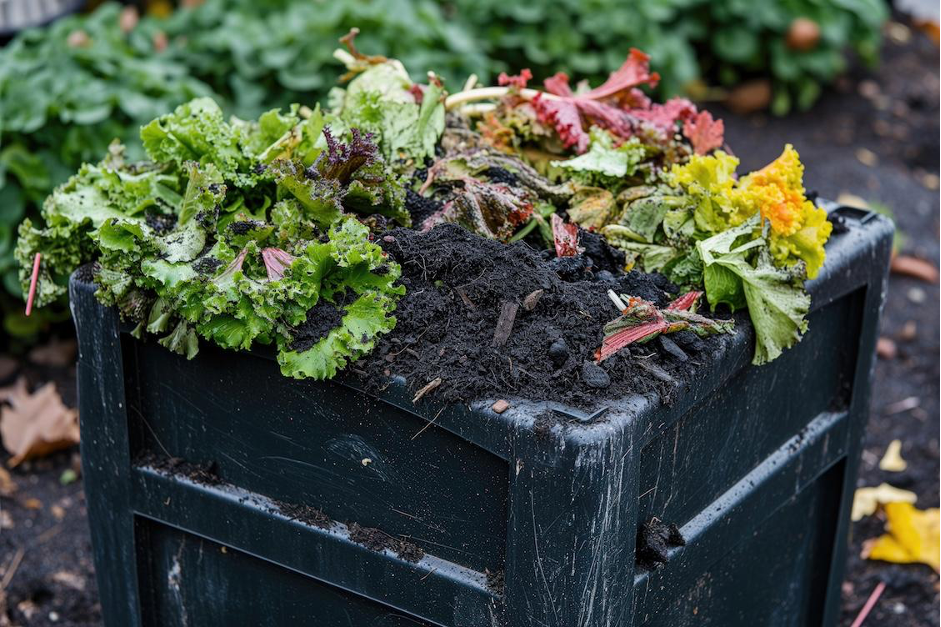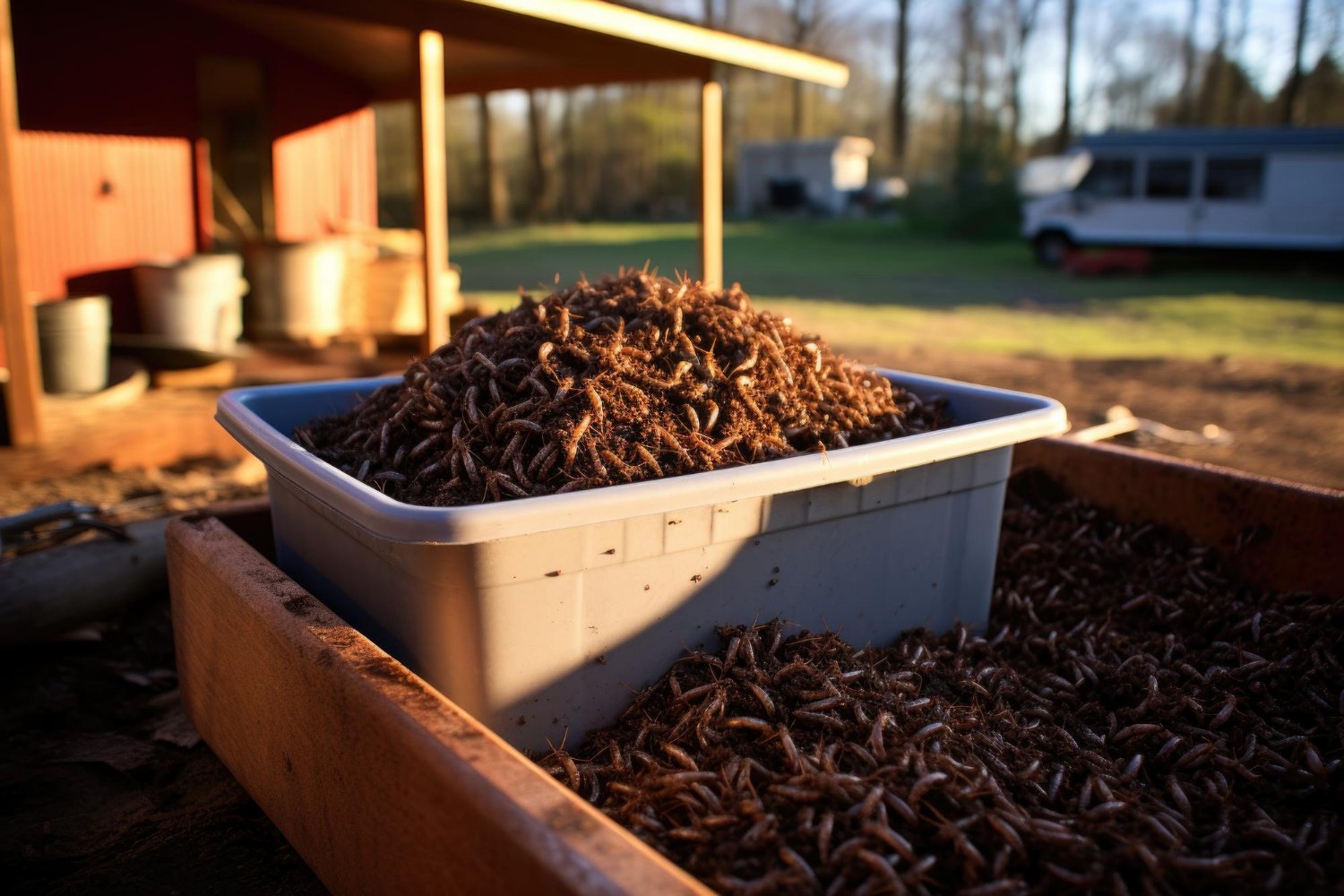 Are you tired of dealing with lackluster soil in your garden? Are you looking for a way to reduce your environmental impact while improving the health of your plants? Well, have no fear because a worm bed might just be the answer to all your gardening woes!
Are you tired of dealing with lackluster soil in your garden? Are you looking for a way to reduce your environmental impact while improving the health of your plants? Well, have no fear because a worm bed might just be the answer to all your gardening woes!
Worm beds, also known as vermicomposting, are a simple and effective way to compost food scraps and other organic materials using worms. Not only does this help reduce waste sent to landfills, but it also creates nutrient-rich soil that can give your plants the boost they need to thrive.
In this blog post, we’ll dive into the world of worm beds and everything you need to know about them. We’ll cover what they are, how they work, and even how to make your very own. So, let’s get down and dirty with vermicomposting!
What’s a Worm Bed?
A worm bed is basically a cozy home for worms that helps turn your organic waste into nutrient-rich soil. It’s like having a little army of composting helpers right in your garden!
With a worm bed, you can improve the quality of your soil while reducing waste and promoting sustainable gardening practices. It’s a win-win situation for both you and the environment. Plus, it’s a great way to get up close and personal with some wiggly friends and learn more about the fascinating world of composting.
How Does It Work?
You might be wondering, “How in the world does a worm bed work?” Well, let me break it down for you! The whole process starts with red wigglers, a.k.a composting worms. These worms are total rockstars when it comes to composting, and they love to chow down on all sorts of organic matter. Think food scraps, leaves, and grass clippings – the kind of stuff that would otherwise go to waste.
Now, as these little guys are munching away, they’re actually producing something pretty magical – worm poop! Worm castings, as they’re officially called, are an incredibly nutrient-rich fertilizer that can do wonders for your plants. And the best part? They’re totally natural and sustainable!
So, in a worm bed, we basically create the perfect environment for these little composting machines to do their thing. We give them a comfy home filled with all sorts of bedding material that not only makes them feel comfortable but also provides them with more food to eat. As they burrow and wriggle their way through the composter, they’re breaking it down and aerating the soil, creating a rich, healthy environment for your plants to grow.
Two Types of Worm Beds
You have two options to choose from: raised worm beds that sit off the ground or dug-in worm beds in the ground.
Raised worm beds are exactly what they sound like: raised off the ground. You can make them from different materials, like wood or cinder blocks. With these beds, your worms get better drainage and more air, plus it’s easier on your back when taking care of them. And you won’t have to worry about digging a hole in your yard. Bonus!
Dug-in worm beds are more like worm bunkers. You dig a hole in the ground and set up your bed there. The soil around the bed keeps things nice and moist for your worms, and it helps keep the temperature steady too. But, you will have to dig a hole in your yard, so get your shovel ready.
How to Make a Worm Bed

Now you know how it works, but how can you build a worm bed by yourself? Don’t worry, it’s not hard – here’s a step-by-step guide.
- Find a container: You’ll need a container that is wide, shallow and has good drainage. Some popular options include plastic compost bins, wooden boxes, or even repurposed bathtubs. Just make sure it has a lid to keep out unwanted critters.
- Add bedding material: Start by adding bedding material. What to use for worm bedding? Things like shredded newspaper, cardboard, or leaves to the bottom of the container. Remember, worm bedding should be moist but not soaking wet.
- Add worms: The star of the show! Start with a pound of worms for every square foot of bedding.
- Add food scraps: Worms are not picky eaters and will happily munch on your kitchen scraps. Just avoid adding meat, dairy, or oily foods. Cover the food scraps with more bedding material to keep the worms happy and healthy.
- Maintain the worm bed: Your worm bed will need some maintenance to keep it healthy and productive. Make sure to keep it moist but not too wet, and avoid overfeeding your worms. You can also periodically harvest the worm castings (the nutrient-rich soil produced by the worms) to use in your garden.
Maintaining the Worm Bed
Once the bed is all made up, you can’t just forget about it. You need to maintain optimal conditions inside the worm bed to make sure your worms stay happy, healthy and productive. Here’s what to do:
- Balanced diet: The key to happy worms is providing them with a balanced diet of food scraps, shredded paper, and leaves. Avoid adding citrus fruits, dairy, meat, or oily foods, as they can make the bin too acidic or attract unwanted pests. Also, make sure not to overfeed your worms. A general rule of thumb is to add enough food scraps to cover only half of the surface of the worm bed.
- Moisture level: Worms breathe through their skin, so it’s important to maintain a damp environment. If you notice that the worm bedding is dry, add a little bit of water to it. If it’s too wet, add some dry shredded paper or leaves.
- Temperature: Keep your worm bed in a cool, dark place. Worms prefer temperatures between 55-77°F (13-25°C), so avoid placing the bin in direct sunlight or near a heat source.
- Harvesting worm castings: Castings are the nutrient-rich waste that your worms produce, and they make an excellent fertilizer for your plants. To harvest worm castings, push the bedding to one side of the bin and add fresh bedding to the empty space. Then, add food scraps to the fresh bedding, and the worms will migrate to that side of the bin. You can then scoop out the castings from the side of the bin where the worms were previously living.
Everything You Need for Building a Worm Bed at Uncle Jim’s Worm Farm
You see? It’s quick, easy and highly beneficial for your garden and for the environment. So, why wait? Start building your worm beds today, and soon enough, you’ll have your very own worm farm.
At Uncle Jim’s Worm Farm, you can get everything you need to build your worm bed and start raising worms right away. From indoor and outdoor composters to worm food, bedding and, of course, composting worm mixes – Uncle Jim has got you covered. Get in touch with us for more info or browse our website for all the supplies you need to start a worm farm!









One thought on “What is a Worm Bed and How Does it Work?”
I have a raised bed garden. I have tried the last 2 years to get worms to stay alive in my bed. Sounds like the trick is to have a bucket set up within my raised garden and throw the castings into the garden every once and a while. Any tips on just incorperating the worms right into the bed? The bed is 11×6.